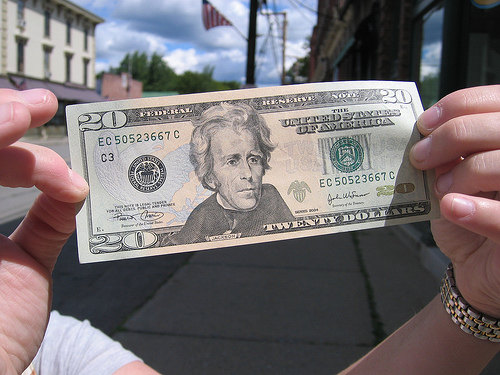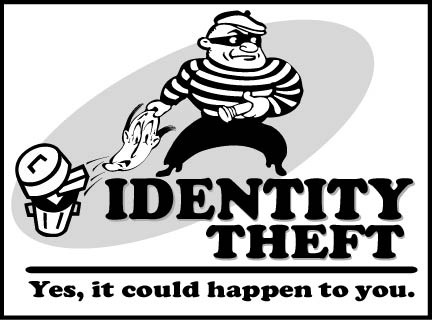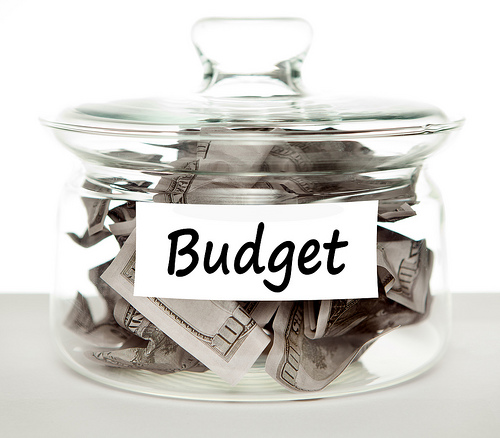
by Adam | Jun 25, 2015 | Credit Repair
The Credit Repair Organization Act (CROA) was passed in 1996 as a way to protect consumers from shady tactics (and downright scams) in the credit repair industry. Designed to regulate the credit repair industry, as well as encourage consumers to be informed about their credit repair rights, the CROA places several restrictions and requirements on credit repair organizations (any group, company, or organization offering credit repair services for a fee). Restrictions & requirements placed on credit repair companies by the CROA According to the CROA, a credit repair organization cannot: Advise you to lie about your credit history (or lie on your behalf) Misrepresent their services Alter or create a new identity for you Charge you until services have been provided In addition to these restrictions, the CROA requires credit repair companies to provide a contract to consumers before agreeing to perform any services. The contract must contain details outlining the credit repair services to be performed, the time frame needed to carry out those services, and the payment amount. They must also allow for a 3-business day cancellation period, during which the consumer may cancel for any reason without incurring any fees. Are there still credit repair scams out there? Thankfully, the CROA is pretty effective at preventing credit repair scams, but as a consumer you still need to be diligent. For example, two credit repair organizations were sued by the FTC in 2005 for targeting Spanish-speaking consumers with promises of deleting accurate information from their credit reports. These kinds of deceptive claims are precisely what the CROA aims to combat. Unfortunately, there are still scam artists out there who often go...

by Adam | Jun 15, 2015 | Credit Repair
If you’ve already asked yourself these four questions before hiring a credit repair company, then your next question might be about cost. Obviously, if you hire an expert to conduct a service for you, you don’t expect them to do it for free – but how much can you reasonably expect to pay for a credit repair company to go to work improving your credit score? The answer is: it depends on the company. Let’s break down the pricing options for 3 of the top, and most respected, credit repair companies, but first: Don’t Forget You Have the Option of DIY Credit Repair – Free of Charge (not counting postage stamps) When it comes down to it, there’s always DIY Credit repair, which only costs some free time and postage (you’ll be mailing a lot of letters). If you like to take matters into your own hands, and you’re motivated enough to stick with it for months on end, then this may be the best option (it’s certainly the cheapest). Cost of Hiring a Credit Repair Company Maybe you’re not too excited about going the DIY route, and you want to know the cost of hiring a professional credit repair company. Most companies will charge you a monthly fee as well as an initial startup fee. You’ll need several months before you start to see positive results, but the amount of time required depends mostly on your individual credit situation. Here’s the basic pricing information for 3 of the top credit repair companies: SkyBlue Credit Repair Price: $59 setup fee, $59 monthly (or $99 for couples). CreditRepair.com Price: $89.95 a month, with no...

by Adam | Jun 8, 2015 | Credit Repair
It’s much easier to do the small things to help prevent identity theft than it is to clean up the damage of having your identity stolen. However, even the most diligent among us can still fall prey to identity fraud. If you discover that your identity may have been stolen, do these 5 things immediately: 1. Freeze your credit cards or accounts where the fraud occurred Contact the credit card company or institution where you’re experiencing fraudulent charges and have them freeze the account. This will effectively stop the bleeding and prevent any more damage from occurring. In order to begin safely using an account again, you may need to re-set PINs, request new cards, etc., but for now just focus on alerting your bank/creditor of the possible fraud. 2. Place a 90-day fraud alert on your credit reports A fraud alert means that the credit reporting agencies will take additional precautions when verifying your identity. You only need to request an alert at one of the credit reporting agencies (they will contact the other 2 for you): Experian Equifax TransUnion 3. File an Identity Theft Affidavit with the FTC The Federal Trade Commission (FTC) is tasked with fighting and preventing identity theft. They rely on people to report suspected identity theft, which you can do online or by calling 877-438-4338. 4. Contact police and file a report Identity theft is a crime, and so you need to report it to the authorities. The main reason for doing this is to create a police report, which you will need when working with creditors and the credit reporting agencies to resolve all fraudulent...

by Adam | Jun 1, 2015 | Credit Repair
“An ounce of prevention is worth a pound of cure.” – Benjamin Franklin Although Benjamin Franklin probably wasn’t thinking about your credit score when he penned this famous line, it certainly applies to identity theft. In fact, there’s a new victim of identity theft in the U.S. every 2 seconds. While not all cases of identity theft are preventable, most are. All it takes is a few precautionary measures to drastically improve your chances of never having to deal with the enormous fallout of identity theft. Here are 7 easy tips for preventing identity theft. 1. Get a paper shredder Seriously. You can find a decent paper shredder for under $30, and it’s the most effective way of making sure your sensitive documents, papers, receipts, etc. aren’t waiting to be snatched up by dumpster-diving fraudsters. 2. Install an effective firewall on your computer For would-be identity thieves who are a tad more tech-savvy than their dumpster-diving cohorts, a firewall is one of the best lines of defense against hackers trying to steal sensitive information from your home computer or laptop. 3. Be aware of who’s watching over your shoulder Simply be aware of who is around you when you’re typing in a PIN or accessing a bank account on your mobile phone. Much of the time, identity theft is a crime of opportunity – so don’t give those around you the opportunity to steal your identity. 4. Keep and organize paper records It’s important to keep and organize paper records (think bank statements, receipts, invoices, etc.) to track all your accounts, spending, contracts, terms and conditions, and more. Basically, it helps you notice...

by Adam | May 22, 2015 | Credit Repair
If you’ve ever had a bad credit score, you know that it often involves a cruel cycle of debt, missed payments and collections. It can be hard to break out of this cycle, mostly because that requires perseverance – nothing is going to get better overnight. You’re in it for the long haul. So how do you go about breaking out the bad credit cycle? Here are 4 steps that will give you a pretty good chance of building good credit, and making sure things stay that way. Step 1: Set up automated bill payments It can be hard to remember when bills are due, and even one missed payment can erase months of progress repairing your credit. The easiest, and most stress-free method of avoiding late payments is to set up automated bill pay whenever possible. Virtually every credit card company allows this, and it’s also an option for other bills such as utility payments and cell phone bills. Once you set up your automatic bill pay, you no longer have to worry about making a payment on time (although you still need to make sure there’s enough cash in your bank account). Step 2: Pay off your entire credit card balance each month Pay off your credit card balance (down to zero) each and every month to avoid falling back into a cycle of debt. Not only does this ensure you don’t build up credit card debt that take years to pay down, it also makes it so you pay zero dollars in interest. Win-win. Step 3: Don’t use your credit card unless you have the cash to...

by Adam | May 15, 2015 | Credit Repair
Last week I wrote about where to start if you’re new to budgeting. Now we’re going to set pen to paper and nail down some concrete strategies for crafting a family budget that actually works for you. We already outlined how to track expenses and separate wants from needs. Armed with this information, you are now fully capable of creating a budget that puts you on the right financial track. But first, you have a few more things to take care of. 1. Decide on a financial goal A budget without a goal is like a TV show without a relate-able central character; there’s little motivation to stick with it through the end. You need a powerful financial goal to make your budget work. For many families, their main goal is to get out of debt. This can be a very powerful goal, especially since it allows you to set deadlines and hold yourself accountable for meeting those deadlines. Other examples of financial goals are: Saving enough money for a down payment on a home Saving for retirement Having enough room in your budget for annual vacations Growing a college fund for your children All these are excellent financial goals, but no matter what you choose it needs to be tailored to you and your family. The right goal will give you the motivation to carry on when the going gets tough. 2. Choose a budgeting platform There are literally hundreds of software programs designed to help you craft a family budget, many of them free of charge. You want to choose a budgeting platform that is easily accessible, that you can quickly check...








Recent Comments